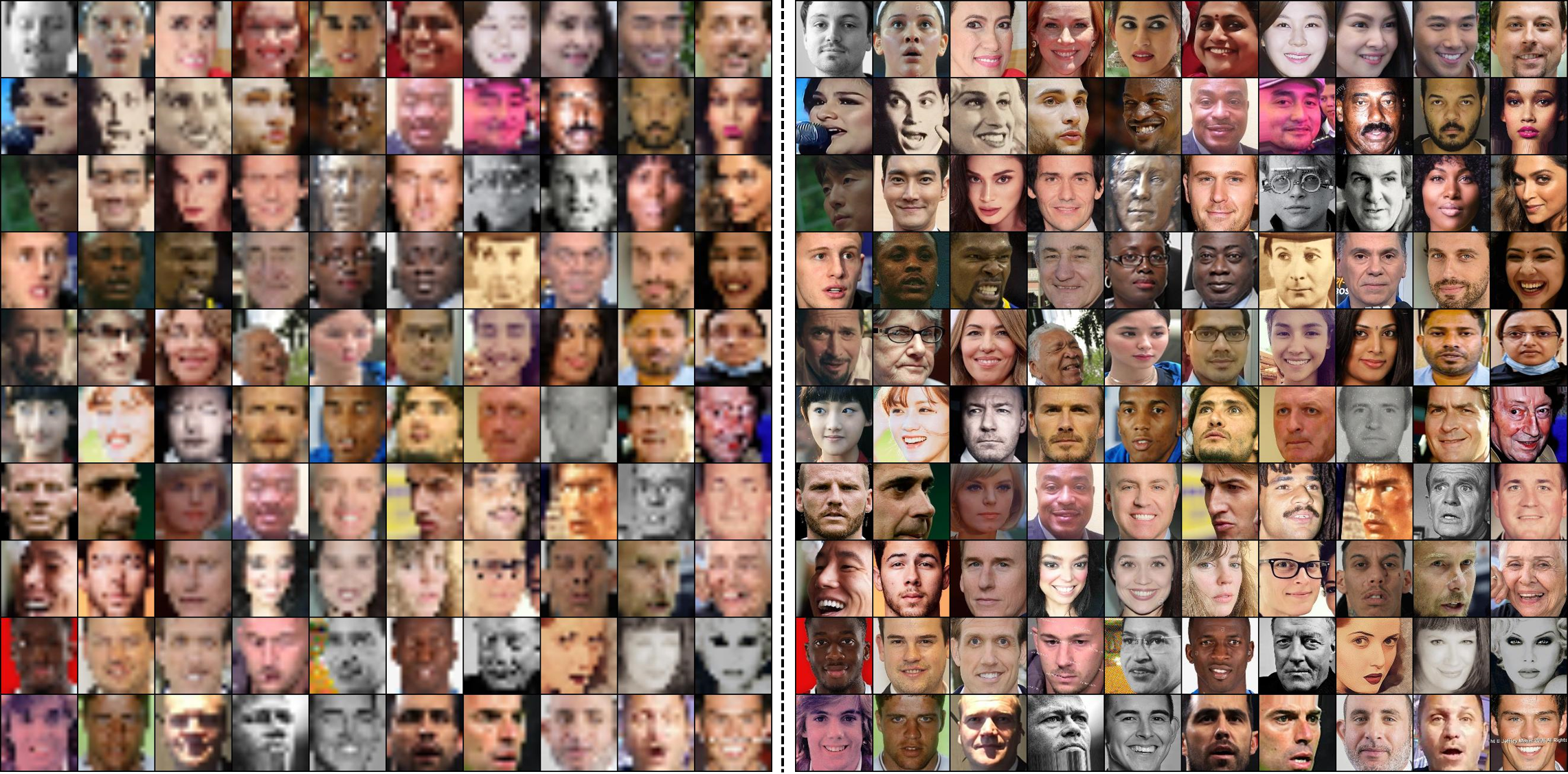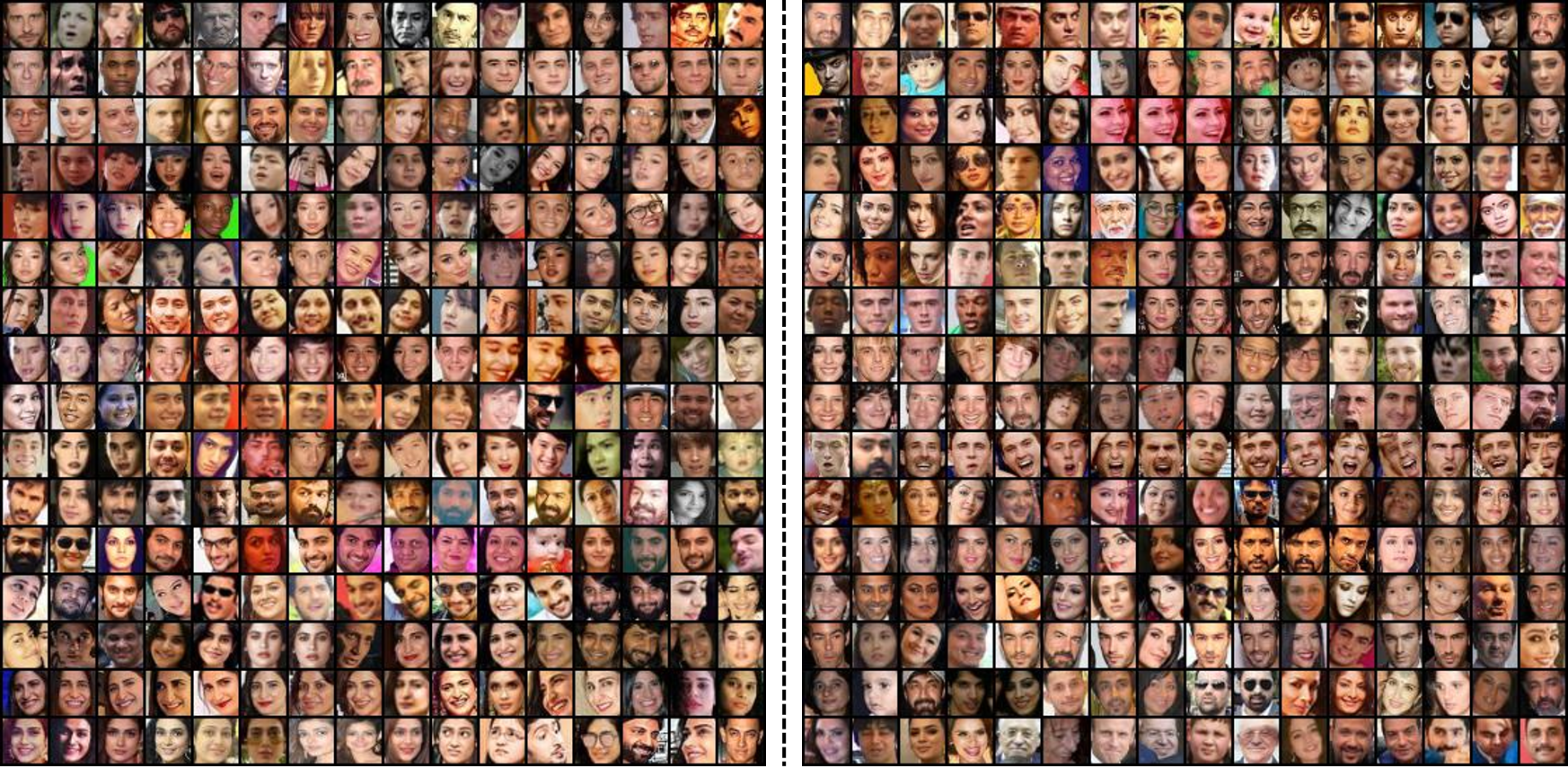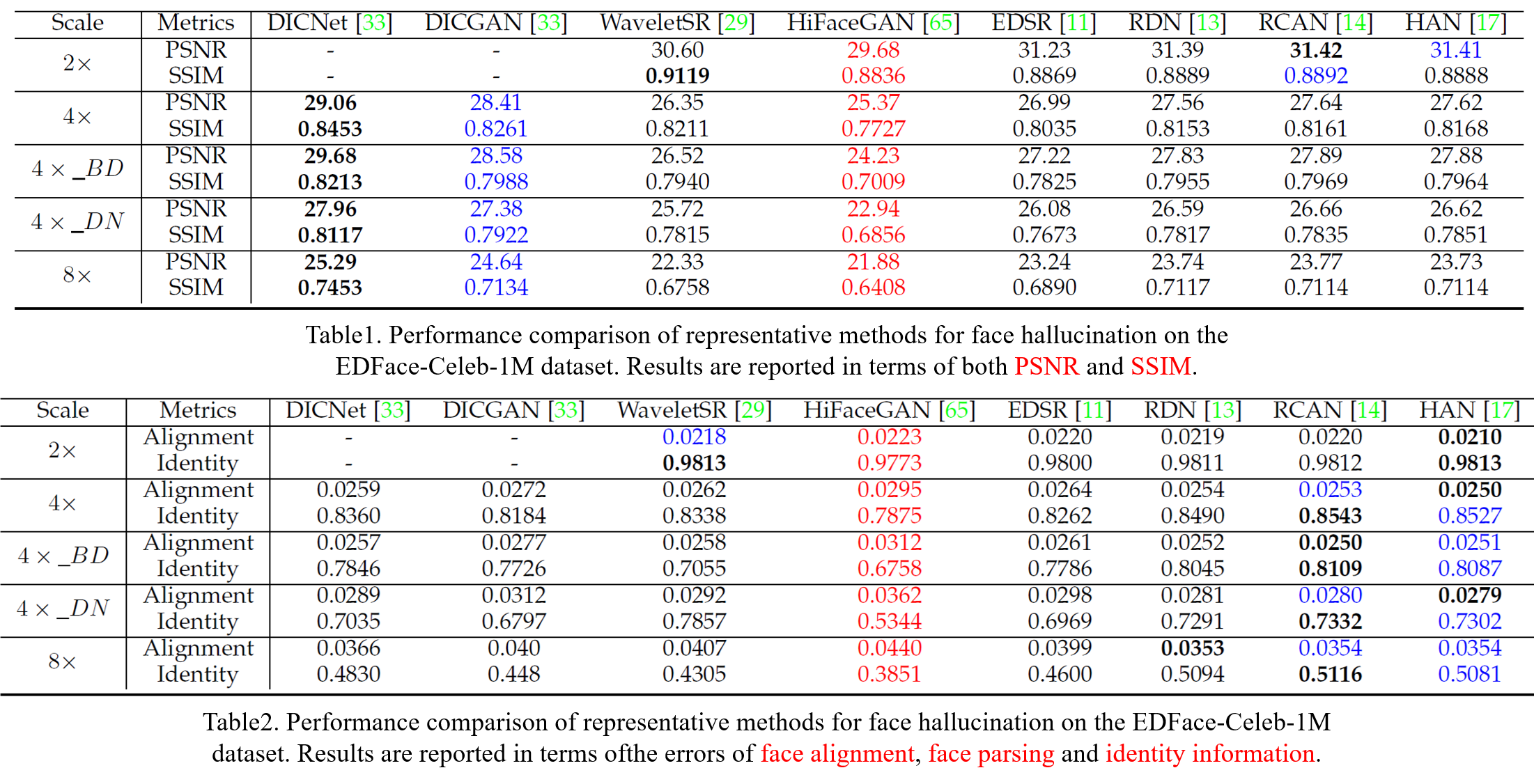
Sample paired images from the synthetic part of our proposed EDFace-Celeb-1M dataset. The left images are low-resolution face images and the right images are high-resolution ones.

Real-world low-resolution images from our proposed EDFace-Celeb-Real dataset.


